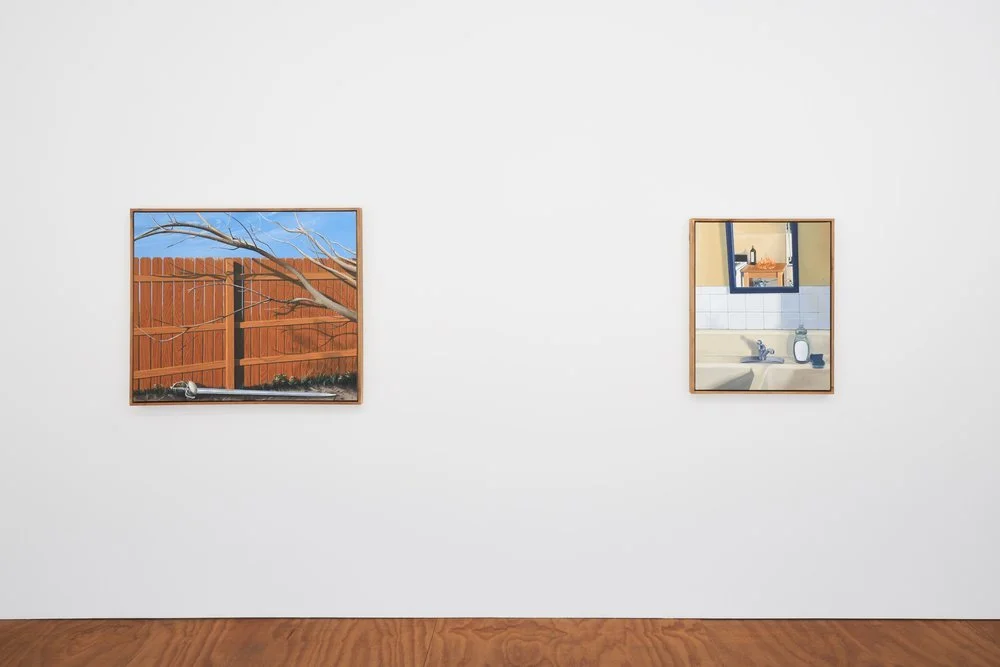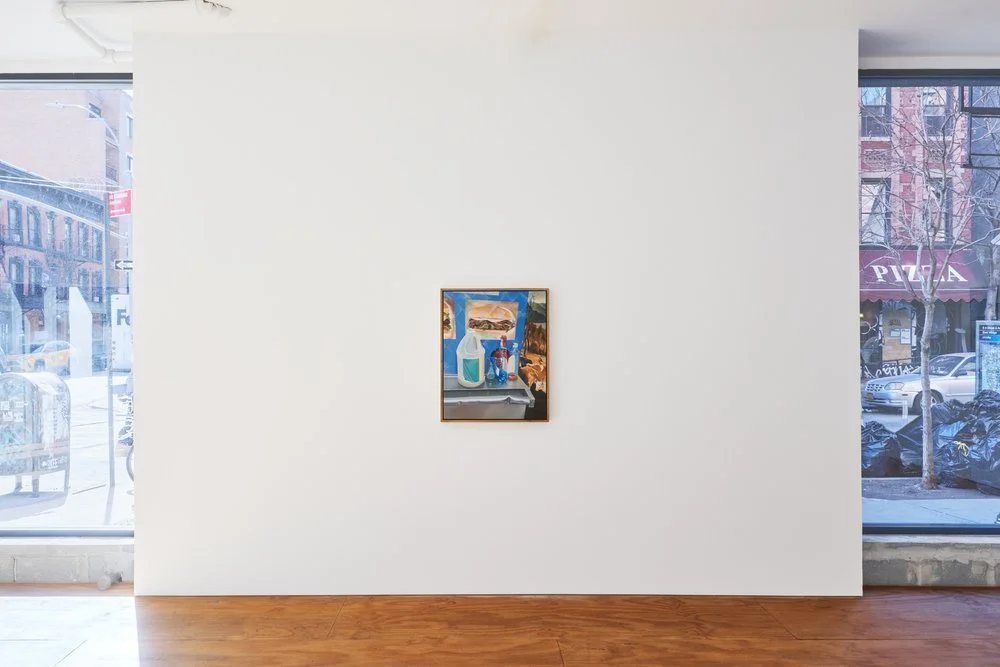CONNER O’LEARY: NOTHING, HERE
Half Gallery is pleased to presents Nothing, here by the artist Conner O’Leary in New York.
February 13 – March 13, 2024
Conner O’Leary’s new paintings take us on a road trip from Governors Island to northern New Mexico. Like many who set off in search of the ideal, we arrive to find that there is “Nothing, here.” Yet along the way, there are plenty of things here, assembled in moments that mix the marvelous with the mundane.
O’Leary’s work combines the attention to detail, texture, and light of the Dutch and Flemish painters of the 15th to 17th centuries with the element of surprise that the Surrealists intended to jolt viewers into a critical stance toward “reality,” thus transforming daily life. He revels in the play of light and shadow, the whorls of wood grain, and the gleam of reflective surfaces, and paints on canvas-wrapped panel, realizing, like the Dutch masters, that a hard surface allows a more precise level of detail.
These are interiors imbued with psychology. Like Dorothea Tanning’s infinite doors in Birthday (1942), each opening onto another, the multitude of doors, windows, frames, and mirrors in O’Leary’s paintings suggest liminality or transition, or reflect a higher truth. The domestic settings they place us in are “unhomely,” the literal translation of Freud’s Unheimliche, or uncanny; in Panic, Morning Fire, a mirror offers an unsettling image within an image. Ode to Surrealism presents a yellow clapboard house in Nolan Park, Governors Island, spied through a window whose panes have become a sliding puzzle.
O’Leary’s Ode evokes René Magritte’s paintings of windows, which toy with the idea of illusionistic painting as a “window on the world” that merely depicts visually verifiable information. In many of these new paintings, however, we have moved through the doorways to the outside, encountering further unexpected moments: a sword lying in a yard, a New York City food cart displaced to the pastoral setting of Bruegel the Elder’s The Return of the Herd (1565), a crisply painted crystal ball nestled in brushy ridges of red earth, reflecting an impossible interior scene.
O’Leary describes these paintings as exploring the concept of “the search for the ideal” and they read as snapshots taken en route. This quest is both a societal preoccupation and a personal obsession for the artist. O’Leary notes that the golden angel figures that float through Hotel Vision—Take Me Away, Return, and earlier works symbolize a struggle with alcohol abuse or depression, and a desire for escape. In their place, he fixated on the notion of the ideal, finding it equally out of reach.
O’Leary’s own journey concludes in Sun and Table at a friend’s house in New Mexico, a place the artist associates with the ideal, with a red sun drawn from Max Ernst’s desert landscape Inspired Hill (1950). Escape is impossible, the ideal eludes us, and mindfulness is easier understood than implemented, but O’Leary finds revelations in the small moments between.


